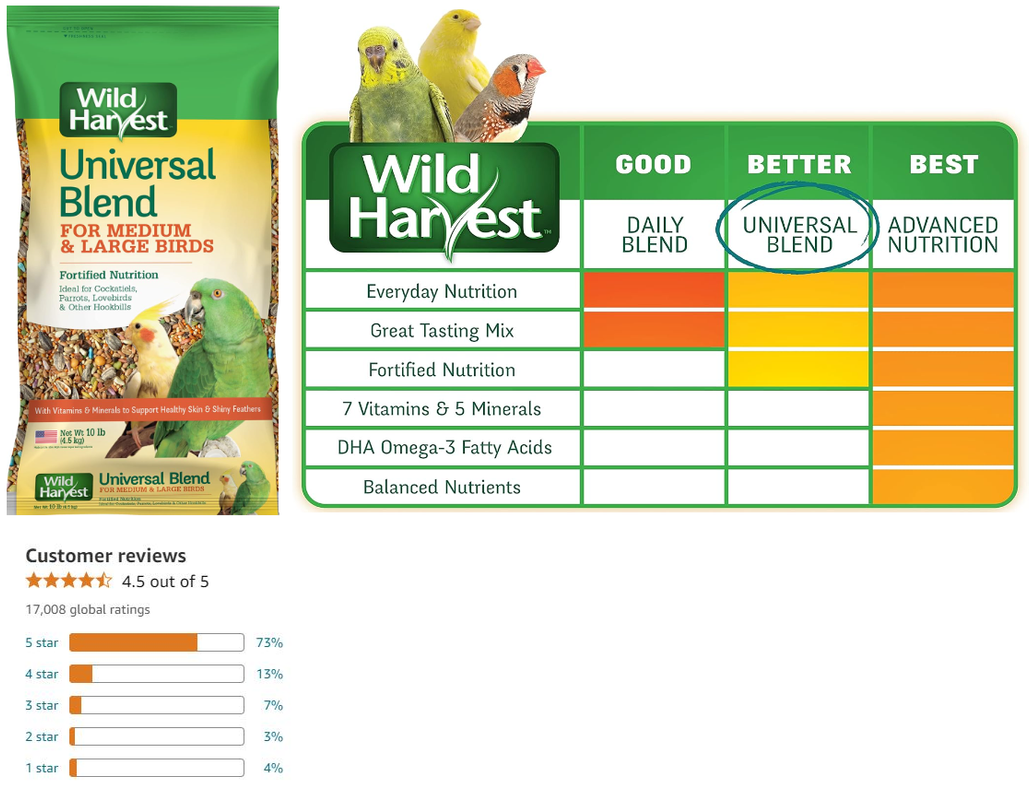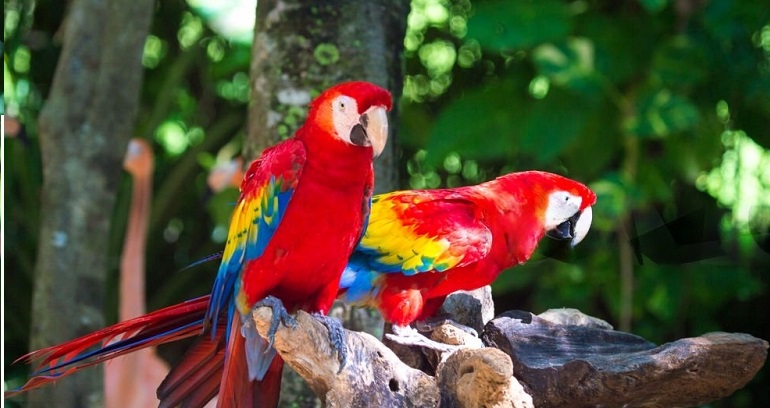Scarlet macaws are well-known for their beauty and personality. Scarlets are largest colorful parrots; and especially they have long tails that often like as long as their body’s size. You can see them in captivity and wild where scarlet macaw lifespan with average 40 to 50 years.
These attractive parrots can reach up to 32 inches long. Large specie of macaw’s beaks is strong and large that helps to break large nuts. Macaws are as hardworking birds, and they have to require enough living space.
Scarlet macaws have a striking red, yellow, and blue plumage. Their naked facial skin is white without any feather lines. The tail is tapered and long with rump patch are blue. Through this article, we will spread light on Scarlet Macaws’ average lifespan, and give some important tips that ensure they can receive the proper care to meet or exceed it.
How Long Do Scarlet Macaws Live in the Wild?
Scarlet Macaws (Ara macao) typically can live between 30 to 40 years in the wild. But, their lifespan are easily affected by many factors, like as predation, disease, food availability, and various human activities. Here, we will show you some factors, and how they impact the lifespan of Scarlet Macaws in the wild:
Factors Influencing Lifespan in the Wild
Predation
Natural Predators: There are some natural predators in wild, due to their size and ability to fly, so their eggs and chicks get more vulnerable. These predators like as larger birds of prey, snakes, and some mammals that can easily access nests.
Defence Mechanisms: Scarlet Macaws use their vibrant plumage and loud calls to protect potential threats. They often nest in tall, inaccessible trees to defence their young.
Disease
Infections: Scarlet Macaws may easily susceptible to several diseases. These are viral infections (like Psittacine Beak and Feather Disease), bacterial infections, and parasitic infestations.
Immune System: While, their immune systems in the wild may be robust, but disease outbreaks can still cause significant death.
Food Availability
Diet: Scarlet Macaws primarily depend on a diet of fruits, nuts, seeds, and occasionally insects. They can easily crack open hard nuts by their strong beaks, and seeds that other animals unable to access.

Seasonal Changes: Their food sources availability may change as Seasonal variations. In lean periods, malnutrition can affect their health and decrease their lifespan.
Human Activities
Habitat Destruction: Deforestation and habitat fragmentation are essential threats. The destruction of rainforests gets less availability of nesting sites and food sources.
Illegal Pet Trade: Poaching for the illegal pet trade also get bad impact on wild populations. Chicks are often taken from nests, so reducing the number of birds that reach adulthood.
Conservation Efforts: In some areas, conservation programs are running. This programs help to protect habitats and educate local communities about the importance of preserving these birds. So, these programs can get positively impact their longevity.
Scarlet Macaw Lifespan in Captivity
The lifespan of Scarlet Macaws (Ara macao) in captivity can significantly exceed their lifespan in the wild, often reaching 50 years or more, with some individuals living into their 70s. Here, you will look at the factors that influence the lifespan of Scarlet Macaws in captivity:
Also Read: Do Cockatiels Have Ears? Their Unique Hearing
Factors Contributing to Longevity in Captivity
Diet and Nutrition
Balanced Diet: In captivity, Scarlet Macaws obtain the carefully balanced diet, like as vegetables, variety of fruits, nuts, seeds, and specially formulated parrot pellets. This kind of diet ensures they can get easily all necessary nutrients.
Nutritional Monitoring: If you do regular monitoring, and adjustments to their diet, then it helps to prevent nutritional deficiencies and related health problems. Thus, it can help to prolong their lifespan.
Veterinary Care
Regular Health Check-Ups: This helps to regular veterinary care that allows for early detection and treatment of diseases, infections, and other health issues.
Preventive Measures: Vaccinations, parasite control, and other preventive measurements help to maintain their health and scale their lifespan.
Environmental Enrichment
Mental Stimulation: Scarlet Macaw parrots are more intelligent and social birds. You can improve their mental level by offering a stimulating environment along with plenty of toys, perches, and opportunities for social interaction.
Physical Activity: You should provide the enough space to fly and exercise. This helps to maintain their physical health, preventing obesity, and related health issues.
Social Interaction
Social Needs: Scarlet Macaws are social birds that thrive on interaction with their human caregivers and other birds. Regular socialization helps to prevent behavioral issues such as feather plucking and aggression.
Companionship: Many owners keep Scarlet Macaws in pairs or groups to satisfy their social needs. So, it can support to a longer and happier life.
Protection from Predators and Accidents
Safe Environment: In captivity, Scarlet Macaws are safe from natural predators and environmental hazards that significantly reduce their mortality rate as compared to the wild.
Tips:Care for Your Scarlet Macaw for Long Lifespan
To care for your Scarlet Macaw and ensure a long lifespan, it is essential to focus on the following outlined aspects:
Diet and Nutrition
Fresh Fruits and Vegetables: Feed the fresh fruits (apples, bananas, berries, and mangoes) and vegetables (like carrots, spinach, bell peppers, and broccoli). These help to provide essential vitamins and minerals.
Also Read: How Long Do African Grey Parrots Live? African Grey Lifespan
Nuts and Seeds: In which include nuts (almonds, walnuts, and macadamia nuts) and seeds as part of their diet. But, these should be fed in moderation, because they consist the high-fat content.
Pellets: You can also give commercially parrot pellets. They help to formulate to meet the nutritional needs of macaws.
Protein Sources: Occasionally, feed protein-rich foods like as cooked eggs, beans, and small amounts of cooked chicken or fish.
Avoid Harmful Foods: You should not feed your macaw avocado, chocolate, caffeine, alcohol, or foods high in salt and sugar, because these can be toxic.
Housing and Environment
Cage Size: Cage has enough space for the macaw to spread its wings fully, and move around comfortably. A minimum cage dimension should be (3*4*5) feet, but larger is always better.
Perches: You can provide several perches of different diameters and textures to promote foot health. Natural wood perches are ideal.
Toys and Enrichment: You should serve a variety of toys to eliminate boredom and stimulate mental activity. Always, rotate toys regularly to keep your macaw engaged. Include chew-able toys, foraging toys, and puzzle toys.
Climbing Opportunities: Should climbing nets, ladders, and ropes inside the cage, and play area to encourage physical activity.
Cleanliness: Maintain a clean environment by regularly cleaning the cage, perches, toys, and feeding dishes. This helps prevent health disease and keeps your macaw healthy.
Social Interaction and Mental Stimulation
Social Time: Spend quality time each day interacting with your macaw. This can include talking, playing, and training sessions.
Training: Engage in positive reinforcement training to teach your macaw new tricks and behaviors. This provides mental stimulation and strengthens your bond.
Company: If possible, consider keeping more than one macaw to provide companionship, as they are naturally social creatures. However, this requires additional space and resources.
Health Care and Veterinary Visits
Regular Check-Ups: Make schedule annual check-ups with an avian veterinarian to monitor your macaw’s health.
Disease Prevention: Ensure your macaw is vaccinated against common avian diseases and protected from parasites.
Signs of Illness: Should learn to recognize signs of illness, such as changes in appetite, behavior, droppings, or appearance. Seek veterinary care promptly if you notice any abnormalities.
Exercise and Physical Activity
Out-of-Cage Time: You should allow macaw out-of-cage several hours each day to fly and explore in supervision.
Play Areas: Create safe play areas where your macaw can easily climb, swing, and engage in natural behaviors.
Emotional and Psychological Well-being
Consistency: Maintain a consistent routine to provide a sense of security.
Attention and Affection: Show your macaw affection and attention, as they form strong bonds with their human caregivers.
Avoid Stress: Minimize stress by avoiding sudden changes in the environment, loud noises, and handling by unfamiliar people.
What is Life Cycle of Scarlet Macaw?
The life cycle of Scarlet Macaw includes several stages: egg, chick, juvenile, subadult, and adult. Understanding each stage of their life cycle helps in providing appropriate care and conservation in the wild.
Also Read: Quaker Parrot Colors Mutation: A Spectrum of Colors
Egg Stage
- Nesting and Laying: Breed during the dry season; nest in tree cavities.
- Clutch Size: 2 to 4 eggs per clutch.
- Incubation: Lasts 24 to 28 days; primarily incubated by the female.
Chick Stage
- Hatching: Chicks hatch blind, naked, and helpless.
- Feeding: Fed by parents through regurgitation.
- Growth: Develop down feathers within weeks; eyes open at 2 to 3 weeks.
- Fledging: Start developing flight feathers around 3 months; practice flying.
Juvenile Stage
- Learning to Fly: Strengthen flight skills and learn to forage.
- Parental Care: Continue receiving food and protection; learn survival skills.
- Independence: Become more independent by 6 to 7 months, though may stay with parents longer.
Subadult Stage
- Adolescence: Fully independent but not yet sexually mature; lasts until 3 to 4 years old.
- Social Behavior: Engage in social interactions and establish social hierarchy.
- Physical Development: Similar appearance to adults but with shorter tail feathers and less vibrant plumage.
Adult Stage
- Sexual Maturity: Reach maturity at around 4 to 5 years.
- Breeding: Form lifelong bonds; participate in courtship behaviors.
- Nesting and Raising Young: Lay and incubate eggs, starting the cycle anew.
- Longevity: Live 30 to 40 years in the wild; 50 years or more in captivity, sometimes reaching 70 years.
FAQs (Frequently Asked Questions)
What is Average Lifespan of Scarlet Macaw in The Wild?
The average lifespan of Scarlet Macaw in the wild is 40 to 50 years.
How Long Can a Scarlet Macaw Live in Captivity?
Scarlet Macaws can live up to 75 years in captivity with proper care, exceeding their average lifespan in the wild.
What Are Common Health Issues That Affect a Scarlet Macaw’s Lifespan?
There are common health issues, like as nutritional deficiencies, obesity, feather plucking; and other diseases including Psittacine Beak and Feather Disease.
What Are The Signs of Aging in Scarlet Macaws?
There are few signs that showing Macaw’s aging includes decreased activity, changes in plumage quality, and less frequent vocalizations.
How Do You Know Your Scarlet Macaw’s Age?
To determine a Scarlet Macaw’s age, observe changes in eye color from dark in juveniles to light yellow in adults. Progression from black to gray to white to yellow eyes can estimate age. Additionally, juveniles have shorter tails compared to adults.
Conclusion
As you read, large macaws parrots can extend their live up to 100 years. Although, mostly macaw parrots have lifespan about 50 to 80 years in captivity. But, their lifespan is relatively shorter in the wild just 40 to 65 years long. You can easily exceed their life span with giving proper care, nutrition diet, and regular veterinary treatment when they are needed.
Also Read: How Long Do Macaws Live? Macaws Lifespan in Wild & Captivity
If this content is valuable for you, then please share it along with your friends, family members, pet lovers or relatives over social media platforms like as Facebook, Instagram, Linked In, Twitter, and more.
Do you have any experience, tips, tricks, or query regarding on this? You can drop a comment!
Have a Nice Day!!






